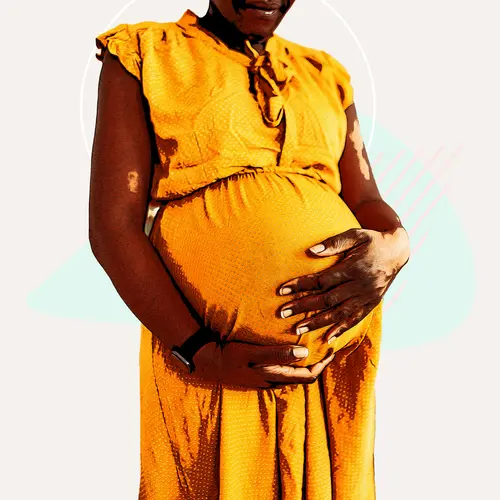A nursing bra is a supportive garment for the breasts, worn while a new mom is either breastfeeding or during pregnancy. It differs from a regular bra because it has a latch to easily and quickly expose the nipple to breastfeed your baby. They also give extra support to engorged breasts that may be heavier than usual. There are many factors to consider when choosing a nursing bra including the size and fit, how it opens, and the material.
How to Choose a Nursing Bra for Mom
Open and closing. When choosing a nursing bra, consider how it opens and closes. Some snap, zip, and hook, while others allow you to simply push the cup to the side. Many moms prefer bras that you can open with one hand, because you may be holding your little one with the other hand.
The fit. If your nursing bra band is too tight, it may lead to a greater risk of plugged ducts or mastitis. It may also lead to sore breasts, so finding the right fit is key.
The best way to find a bra that fits right is to visit a store in person and get fitted. The salesperson will measure your bust line and underbust to find the perfect size for you. Some online bra shops have instructions so you can measure yourself and find your size that way.
Some experts recommend buying a bra in a store first, so you can find the perfect fit. Then, you can buy others of the same style online later. Experts also recommend only buying one or two nursing bras while you are pregnant. Your breasts may change after you give birth, but you will need at least two bras for the first few weeks. After that, you may want to buy more in a different size.
Material. Experts recommend natural fabric for nursing bras, like cotton. These fabrics are more breathable than synthetics. Natural fabrics are also more absorbent in the case of leaks. Synthetics can trap moisture for longer periods of time, potentially leading to irritation.
Cup style. A bralette or soft cup bra is usually better than an underwire bra for nursing. Pressure from an underwire can cause discomfort or clogged ducts.
Tips for Using a Nursing Bra
Don't try to skimp and go with a regular bra. Lifting your usual underwire up over your breast to nurse may hurt, and it can do some damage. Additionally, regular bras are not designed with extra support for breasts that are extra heavy with milk. A nursing bra is best for nursing moms. Here are some tips to consider when using a nursing bra:
Wear something simple and comfortable. In the first few weeks of your baby's life, while you are still getting used to nursing, you may not want to wear a nursing bra much at all. However, women with big breasts, or those who find their engorged breasts uncomfortable, may find it better to wear something simple that is easy to pull down during this period.
Use good-quality nursing pads. In addition to wearing your bra, you may also want to use a nursing pad, especially for the first few months. This is a small, absorbent pad you can put in your bra in front of your nipple. If you have a leak of breast milk, it absorbs it, keeping you more comfortable and reducing the amount of laundry you may need to do.
Get hospital-ready. Pack your nursing bras in your hospital bag for when the baby comes. You will want to practice using them while you have support at the hospital after your little one has arrived.
Stretchy material. After you have a baby, your breasts may swell if they become engorged. Flexible, stretchy materials in nursing bras have some give for when you need more space. This can come in handy at night.
In addition to nursing bras, there are also nursing tank tops. These are tank tops with detachable straps or openings to quickly bring the breasts out for feeding. They have an internal shelf bra for support. Some moms find these more comfortable than nursing bras.
Get help. If you have trouble finding the right kind of nursing bra for you, contact a lactation specialist. They can get to the root of the issue and help you find the one that will work best for you. They can also help with any other lactation and nursing issues.

